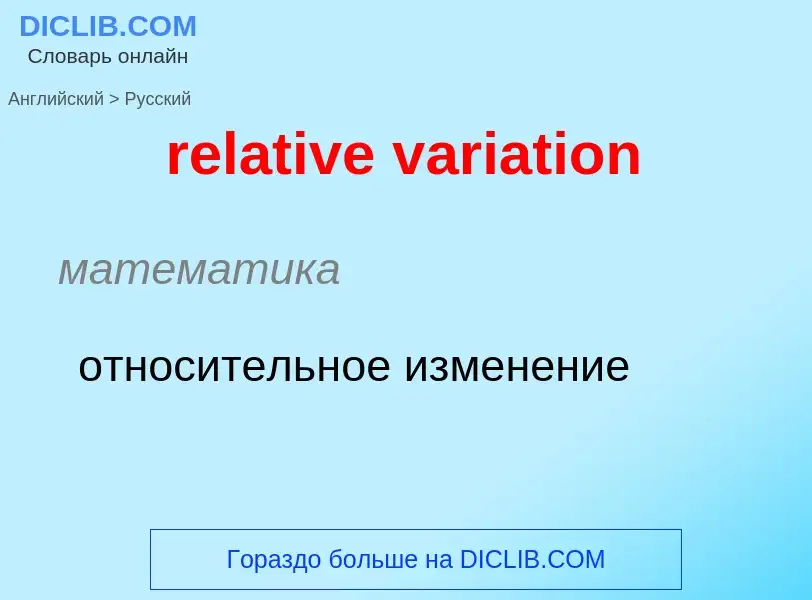Translation and analysis of words by ChatGPT artificial intelligence
On this page you can get a detailed analysis of a word or phrase, produced by the best artificial intelligence technology to date:
- how the word is used
- frequency of use
- it is used more often in oral or written speech
- word translation options
- usage examples (several phrases with translation)
- etymology
relative variation - translation to russian
математика
относительное изменение
общая лексика
коэффициент вариации
математика
коэффициент изменчивости
строительное дело
коэффициент вариации, коэффициент изменчивости (мера относительной изменчивости, отношение стандартного отклонения к среднему значению величины, обычно измеряемое в процентах)
Definition
Wikipedia
Relative dating is the science of determining the relative order of past events (i.e., the age of an object in comparison to another), without necessarily determining their absolute age (i.e., estimated age). In geology, rock or superficial deposits, fossils and lithologies can be used to correlate one stratigraphic column with another. Prior to the discovery of radiometric dating in the early 20th century, which provided a means of absolute dating, archaeologists and geologists used relative dating to determine ages of materials. Though relative dating can only determine the sequential order in which a series of events occurred, not when they occurred, it remains a useful technique. Relative dating by biostratigraphy is the preferred method in paleontology and is, in some respects, more accurate. The Law of Superposition, which states that older layers will be deeper in a site than more recent layers, was the summary outcome of 'relative dating' as observed in geology from the 17th century to the early 20th century.


